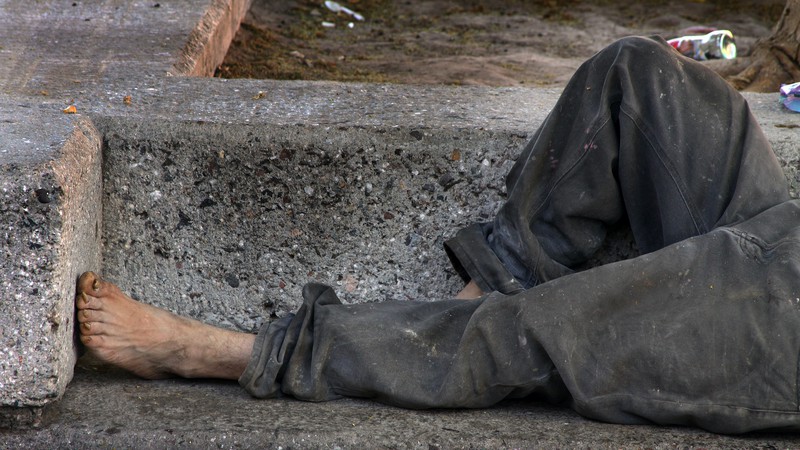National spotlight falls on local crisis, potential solutions

WaPo called Sacramento "the capital of Blue State America," and said the city “mirrors how much of the state, as well as many major cities across the coastal West, are feeling about the worsening humanitarian crisis." Tomas Castelazo / Wikimedia Commons C.C. 3.0 Unported License
In February, volunteers from the homeless advocacy group Sacramento Steps Forward began their “point-in-time (PIT) count” in the city. That’s the process by which the local, state and federal governments assess how many people are living without housing in the United States. The process, mandated by the federal department of Housing and Urban Development (HUD), is pretty much what it sounds like—a count of the homeless population at a specific point in time.
The PIT is supposed to take place on a single night in January, every two years. But as it did with so much in society, the COVID-19 pandemic threw a wrench into the effort to compile the biennial homeless census. Sacramento Steps Forward was not able to undertake a count in 2021, and the January 2022 count needed to be postponed a month.
The results of 2022’s point-in-time count will be released in June, but Sacramento’s homelessness crisis has become so desperate that on April 30 it drew national media attention, when the Washington Post published a detailed article on how the crisis is impacting the state’s capital city. The Post’s 3,500-word report, written by Scott Wilson, with photos by Melina Mara, discusses how the “despair and frustration” felt by the homeless population in Sacramento “mirrors how much of the state, as well as many major cities across the coastal West, are feeling about the worsening humanitarian crisis of homelessness.”
The 2019 PIT count, found a total homeless population of 5,570 in Sacramento. But the Post reported that the number “could be twice that today, according to advocates for the homeless and city officials, and more than a third suffer from addiction or mental illness.” That means the final 2022 count could be in the neighborhood of 10,000
A shortage of shelter beds—only about 3,000, almost all filled nightly—results in the homelessness crisis going on public display in roadside camps and public parks and even directly across from the state Capitol, the Post noted.
The outdoor camps in part stem from a 2018 federal court ruling, Martin v. Boise, in which the Ninth Circuit Court of Appeals held that forcing homeless people from camping on public property counted as “cruel and unusual punishment,” under the Eighth Amendment to the United States Constitution.
The Post report details a series of violent incidents allegedly committed by people who live in outdoor homeless camps, including two recent murders. The shocking crimes jolted the city council into creating a November ballot measure which, if approved, would “require the city to provide emergency shelter on a tight timeline for 60 percent of the city’s homeless population.”
If the measure passes, police would be legally permitted to roust homeless people from their camps on public land—on the condition that the people in the camps are offered shelter beds. Even if they refuse the temporary shelter, they can still be moved out of the camps.
The proposal, which has the support of Mayor Darryl Steinberg, has met opposition from critics who say it would cost far too much money, as well as from some homelessness advocates who fear that the plan would simply make the homeless population “invisible.”
Articles which extol the virtues of a report or article put out by a local newsroom.